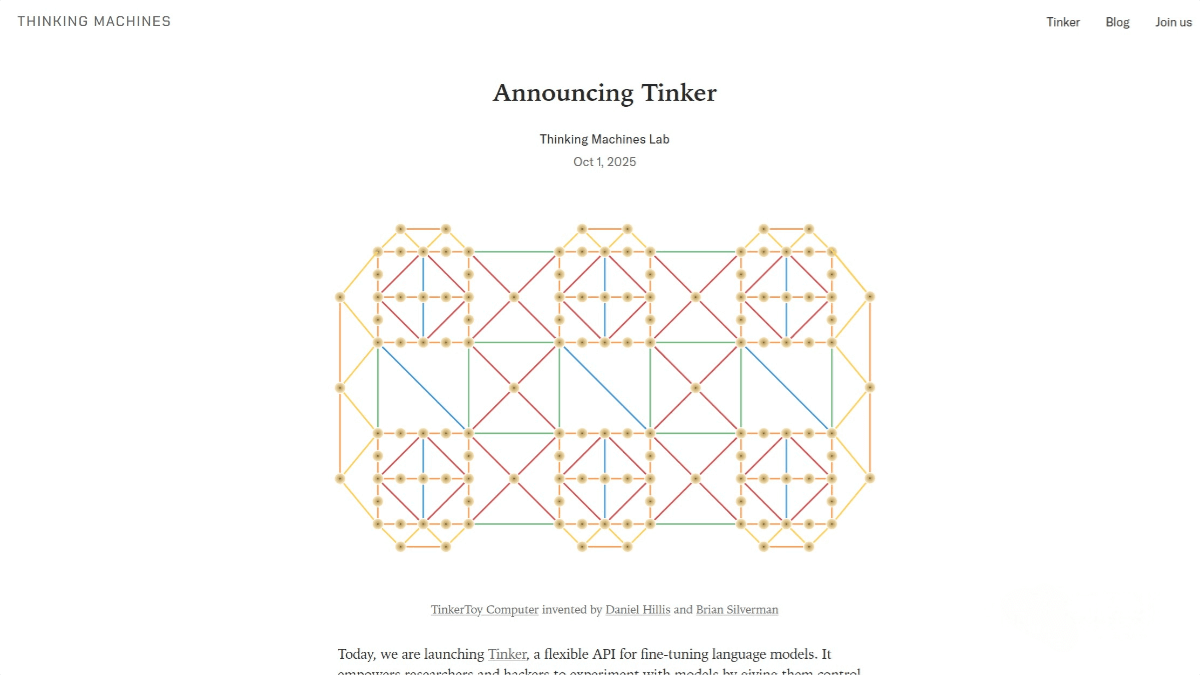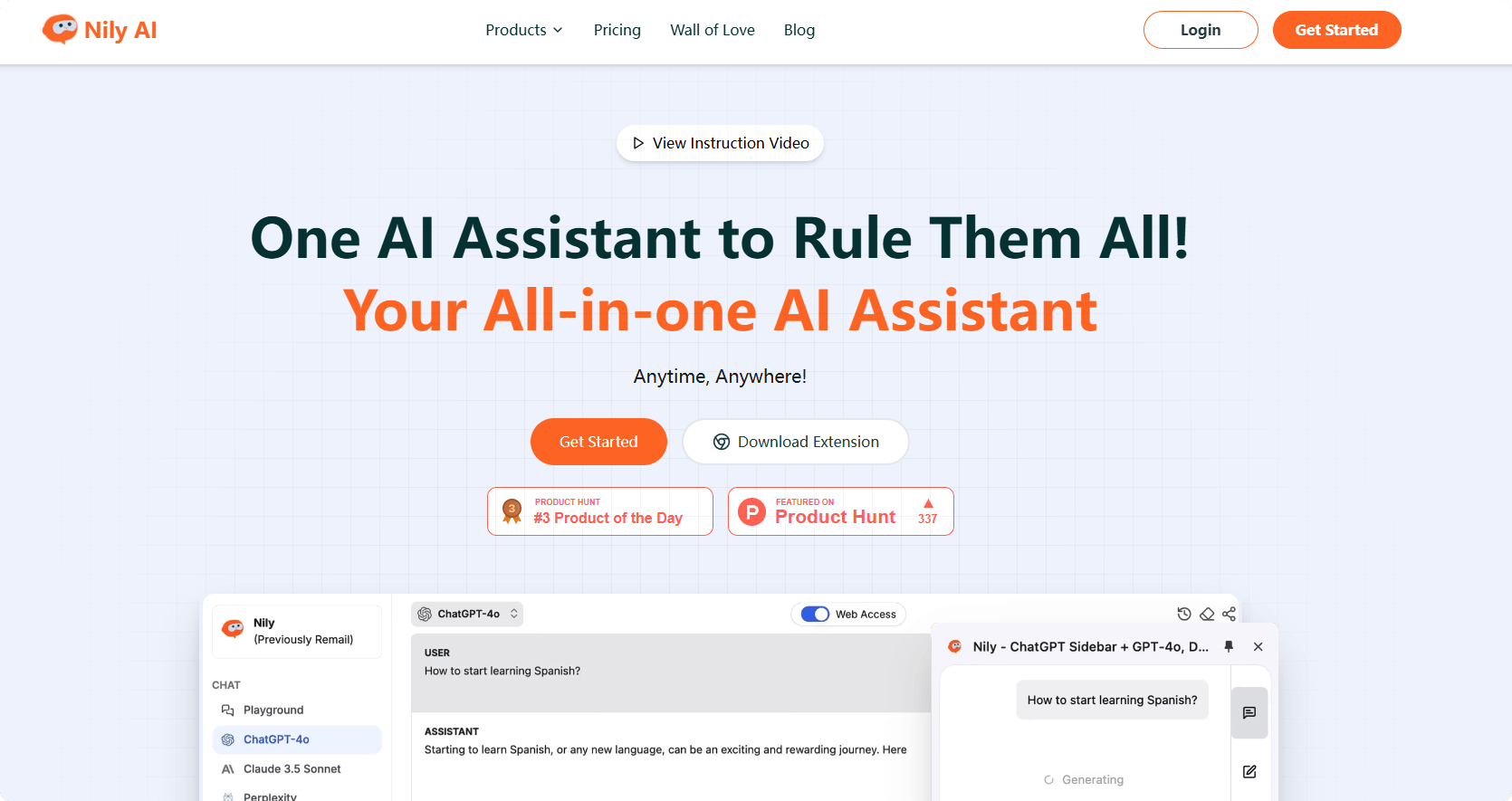Tinker API – A Model Fine-Tuning API Released by Thinking Machines Lab
What is Tinker API?
Tinker API is the first product released by Thinking Machines Lab, designed specifically for fine-tuning language models. It simplifies the fine-tuning workflow, allowing researchers and developers to focus on algorithms and data without worrying about complex distributed training infrastructure.
The API provides low-level primitives such as forward_backward and sample, enabling developers to build custom fine-tuning or reinforcement learning algorithms. It supports a wide range of open-weight models, from small to very large; switching models requires changing just one string in the code.
Tinker integrates LoRA technology, allowing multiple training tasks to share a common compute pool for cost efficiency. It also comes with an open-source companion library called Tinker Cookbook, which contains implementations of various post-training methods.
As a fully managed service, Tinker runs on Thinking Machines’ internal cluster and handles task scheduling, resource allocation, and fault recovery automatically—freeing developers to focus solely on algorithms and data. Currently, it is in free private beta, with a usage-based pricing model planned for the future.

Key Features of Tinker API
-
Low-level primitives: Provides operations such as
forward_backwardandsampleto support building custom fine-tuning and reinforcement learning algorithms. -
Wide model support: Compatible with models ranging from small to large open-weight LLMs (e.g., Qwen-235B-A22B). Switching models requires only modifying a single string in the code.
-
LoRA integration: Enables multiple training jobs to share compute resources, optimizing cost efficiency.
-
Open-source companion library: Ships with Tinker Cookbook, which implements a variety of post-training methods.
-
Managed service: Runs on Thinking Machines’ internal infrastructure, automatically handling scheduling, resource allocation, and fault recovery.
-
Developer-friendly: Provides a native Python interface that is simple and easy to use.
Project Links
-
Official Blog: https://thinkingmachines.ai/blog/announcing-tinker/
How to Use Tinker API
-
Request access: Apply for whitelist access via the official form – https://form.typeform.com/to/jH2xNWIg
-
Install and configure: Install Tinker API and set up the environment.
-
Write code: Use Tinker’s low-level primitives to implement fine-tuning or reinforcement learning algorithms.
-
Run training: Submit training jobs to Thinking Machines’ managed infrastructure for execution.
Application Scenarios of Tinker API
-
Formal theorem proving: Princeton’s Goedel group used Tinker with LoRA to fine-tune a large language model for formal theorem proving, achieving full fine-tuning performance with only 20% of the data.
-
Chemical reasoning model training: Stanford’s Rotskoff Lab trained a chemical reasoning model using Tinker. After reinforcement learning on LLaMA-70B, the accuracy of converting IUPAC names to chemical formulas jumped from 15% to 50%.
-
Multi-agent reinforcement learning: UC Berkeley’s SkyRL team ran a custom multi-agent RL loop involving asynchronous off-policy training and multi-step tool use.
-
Long-context AI control tasks: Redwood Research used Tinker for RL training on the Qwen3-32B model for long-context AI control applications.
-
Classic supervised fine-tuning: Tinker supports use cases ranging from standard supervised fine-tuning to highly experimental RL pipelines.
Related Posts




